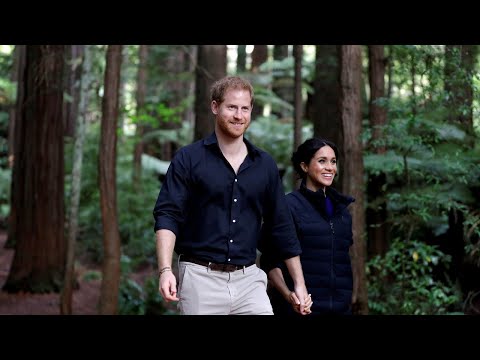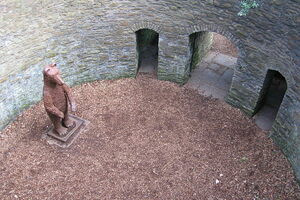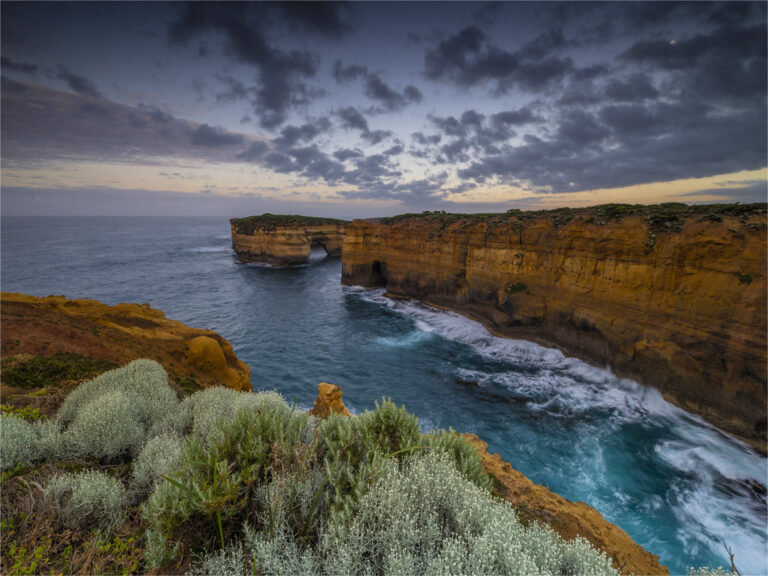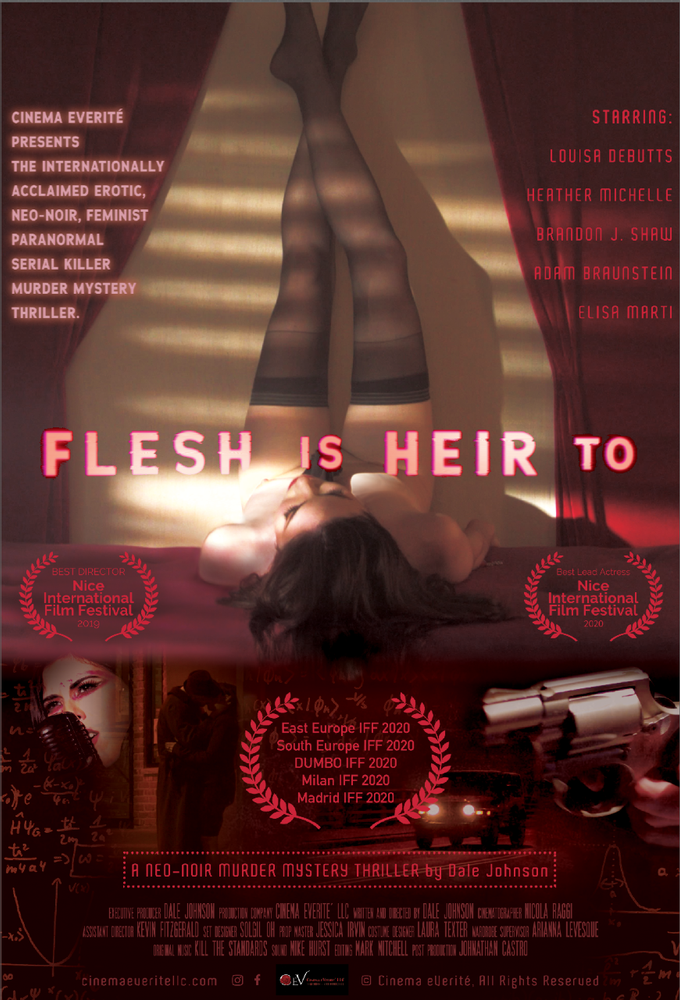Visions of Friendship: Michael Angelo Covino and Kyle Marvin on The Climb
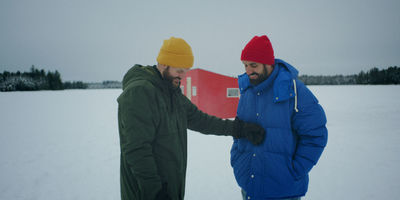
Speaking as someone who loves modern comedy and crafty filmmaking but rarely expects them to be in the same movie, Michael Angelo Covino’s “The Climb” is a gift. The script is sharp enough that even without its batch of engrossing, one-take sequences, it could have been a memorable buddy epic, focusing on Mike (Michael Angelo Covino) and his life-long friend Kyle (Kyle Marvin) through various highs and lows of their elastic relationship.
But it only just starts with Michael telling Kyle, while biking up a massive hill in France, that he slept with Kyle’s fiancee. That hill is a very funny setting for such a reveal, and then the camera keeps going as Kyle tries to catch up with Mike. Suddenly, you’re watching both an expertly written scene of dialogue and precise character development, and you’re sucked into the characters’ life-changing moment because an edit hasn’t changed your perspective. And when you do notice that the camera hasn’t cut, it makes you all the more invested in the scene and its athletic execution. The film mixes raw, relatable emotions with high-wire filmmaking, and the results are exhilarating.
Written by Marvin and Covino, and based on the short of the same name, “The Climb” examines the complicated DNA of a friendship, while observing two men who suffer from an easily diagnosable case of arrested development. Time passes by through major life events—Thanksgiving, Christmas, a wedding and more, each captured in one shot—and creates a portrait of their complicated bond, with some scenes climaxing to an embrace, or a betrayal. A third person, Marissa (Gayle Rankin), enters the picture as Kyle’s new fiancee, and she has her own feelings about this friendship that can be as fulfilling as it is destructive. The tension and release from this dysfunctional love triangle is matched by Zach Kuperstein’s framing and pacing with camera movement, along with the movie’s tendency to bookend its long sequences with a lo-fi musical number. Jokes are select in their appearances, but they always hit big because of how often they catch you off-guard.
When Covino and Marvin talk about the film, silent film comedians like Buster Keaton and Charlie Chaplin come up. Not because it’s an immediate comparison, but because that’s who “The Climb” has more in common with than the buddy indies of similar constructs, or the studio projects that try to sell funny people on a massive scale. “The Climb” is comedy filmmaking that remembers how funny a movie can be when its select humor is mixed with a clear sense of risk. And considering that this is Covino’s directorial debut, it shows the immense promise for a vision that thinks outside of standard visual storytelling.
RogerEbert.com spoke to Covino and Marvin about the inspiration behind their buddy epic, the philosophy behind their visual approach to comedy, the stunt gag that probably gave Covino a concussion and more.
How does making a movie like this affect a friendship? Does it bring you closer together? Or make you more communicative, or conscious of your friendship?
KYLE MARVIN: Certainly more conscious. The way that you’re speaking about these characters, reflects your opinions and visions of friendship. I think it can be like more revealing and you kind of have to open yourself up to scrutiny, or your own self-scrutiny. I think in that sense it certainly made us, and made me, explore the ideas for friendship and those bonds a little bit more.
MICHAEL ANGELO COVINO: I remember there was a time when we would take a break from each other, and just not see each other for a couple weeks, or a month, or something. We’d talk on the phone. We were intensely living together and writing together and shooting together. And then traveling to festivals together. But I think it’s a testament to our friendship and how we complement each other, and I think we have this shared work ethic. And desire to make films and write together, that sort of above all else, even if we’re annoyed with each other, it’s like, “Alright, we’ve gotta get these pages done. Let’s just sit down and be annoyed with each other but also figure out what happens in this scene.” That became the status quo.
Especially when the characters are annoyed with each other, it’s striking that Michael has always been the more annoying one, the asshole. I was struck by that watching the short, and realizing that the roles never switched. Michael, why are you the asshole?
KM: Believe it or not, we talked about that before the short.
MAC: We actually rehearsed it a bunch where we would play opposite roles in scenes, and put it up in an acting class and explore what that felt like. It was fun. I probably would have been more interested in playing Kyle’s role, [but] I just think it’s a lot more natural to be the asshole. [laughs] I think we just wrote to some of our simple strengths, or the strengths we felt like we could lean into. It was fun to play these characters in the way that we played them, I think. I don’t not regret switching roles, although I do regret it in some ways because people constantly think I’m an asshole now.
KM: [laughs]
MAC: They don’t give me a chance. I’m like, “I swear I’m not that person!” And then Kyle says something and I’m like, “Shut the f**k up!”
KM: And I say, “It’s OK, he’s great. He’s a great guy.”

Are the major life experiences from this movie based on things you have figured out together?
MAC: There’s some loose factual stuff that it’s based on, but nothing with each other. I think it’s like, oh yeah, a friend sleeps with your ex-girlfriend, and you’re trying to figure out how to process that. And that was maybe the impetus for the original idea for me. But out of that, it was just loosely based on a friendship Kyle had with someone, or a friendship that I had with someone, and interactions that we had or a dynamic that developed. There’s this interesting dynamic of, a person who takes more from a relationship, and a person who gives more. And at what point do you just cut it off, or at what point do you just hold onto it for the rest of your life?
KM: Strangely, those relationships weren’t just our relationships with other men, I think we pulled from our female relationships and our romantic relationships, and I think there’s some pretty universal themes and friendship sort of fits. It doesn’t sort of matter what the relationship is, it’s a sort of universal experience that people can relate to.
I was struck watching it again about the sense of family, and how it challenges the idea of what a “family” is.
MAC: I think that’s the thing—we have our biological families, or lack thereof. And then, we kind of over time accumulate an extended family that in some ways we’re closer with the people in the extended family because we can speak more freely with them. Or, we have a different relationship that maybe is fulfilled differently than the relationship you have with your sister or your mom.
KM: Also, I think there’s strangely a catharsis in the film with the sense that, people go through their whole lives without having their own best friend being like, “She’s bad for you.” That’s kind of what everyone wanted to say, and never said it. And it’s kind of fun to watch it play out in real time, because you fantasize about it and you never go through it.
MAC: I go through with it.
KM: Yeah, Mike goes through with it, but I never go through with it. Or nor does any sane person.
MAC: I told one person who was supposed to be married not to marry someone.
Was that moment dramatic? Could it have been “Climb”-worthy?
MAC: Those last longer, those conversations in real life, than like a five-minute scene. In a movie it’s like, “We gotta be out of this scene in five minutes, let’s be efficient.” Whereas in life, it’s like, “This conversation has been going on for an hour and 45 minutes.”
KM: And half the time it’s the same words, over and over again!

Speaking of timeframe, there’s a sense in this movie of life unfolding one extended take at a time. Does it get any easier organizing and executing extended takes happen? Or by each sequence, does it seem like starting at the bottom?
MAC: It gets much easier … and it’s still just as hard depending on the scene. It gets a lot easier in that everyone knows the game. Everyone on set, by Day 12, is like, “Alright, we get it. This is how this thing works.” There’s not as much pressure in the beginning, and then the pressure gets dialed up more and more as we get into the late hours of the shoot day, and we’ve got two hours left and we know we need to nail the take. And someone keeps making the same mistakes, and we keep not getting this one part. But it works itself out, because you get into a rhythm when you’re shooting any film. Every time you shoot a film, people forget that you block, then you light, and then you shoot. In that order. And with this type of film, it’s just a lot of blocking, and a lot of rehearsing, and a lot of figuring it out for a day-plus before you’re finally shooting and trying to figure it out.
I have a few lightning round questions, because I know we could talk about this part all day. But how many takes it did you do for … the Christmas scene?
MAC: 13, I think we would have shot more but I kind of concussed myself. I didn’t go to a hospital to see if I had a concussion, so I don’t know if I concussed myself, but I definitely split my chin open.
KM: And was bleeding.
From falling on the table?
MAC: We did a bunch of takes without the table so we had it clean, you didn’t see me fall but I was already laying down. And then when we had that, we were like, “Alright, let’s start doing the stunt takes.” And I just kept falling and I think I got three or four falls in, and by the fourth one I was like, a little out of it. [laughs]
How many takes for the ice fishing sequence?
MAC: That’s a confusing one, because we shot three takes on the original day, and then we went back and got a couple more. So probably all-in, like seven takes. Kyle went underwater seven times.
KM: That was the one where probably did the least number of takes because it was so intense, and there were scuba divers under there. There was a lot to that one where the pressure was high, and it was like, “OK, we got it. Let’s not keep torturing ourselves.” Whereas with other takes, with the scene going up the hill it was just us, and we like, “Let’s keep torturing ourselves.”
How many takes on the church scene?
MAC: I want to say 28, or 29 times.
KM: That whole thing, inside and outside, car coming in. That was one sequence.
Michael, you enter that scene with the car coming into frame right on the dot. Was that luck? That’s such a specific blocking detail but the film is filled with them.
MAC: There were a lot of times when I didn’t hit the mark. It’s muscle memory! You just get it down to a science. You’re like, “OK, I need to hit the sign with the car at this speed in order to land at the exact mark.” But there were times when I would overshoot it and the camera would miss, and I would call “cut,” because I knew I over-shot it. Or we would just run out the rest of the scene and then we would dial it in.
But that was the challenge of this film, there were times when I missed that mark and it was like, “Do I use this take where I’m a little off here, or do I use one where the blocking in this section is better?”
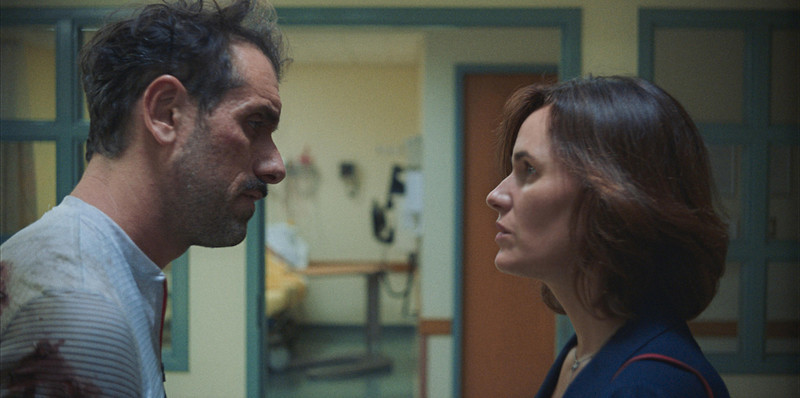
When you were dreaming up this movie, were you intentionally thinking about how to use danger? Or using that a question of, “Are they going to pull it off?”, as part of the comedy?
KM: Not from a camera-technique viewpoint. But certainly from a … “Oh, OK, what are the hardest things to do? A baby. A dog. A big sign. Underwater.” And it’s like, “Great, let’s put a baby at the end of this scene that depends on a baby in a car and hopefully that baby is laughing at the right moment.” Or, “Oh, let’s put a crazy stunt seven minutes into a scene.”
MAC: Or the Thanksgiving scene was my dog, and it had to hit a mark. And at a certain point, it didn’t want to. “Come on, Grandpa, you can do this.” And she was like, “No, I’m good.”
KM: The thing is that the dog was so well-trained that when she was yelling “No, no, no,” the dog was like, “OK, I’m not gonna do it.”
MAC: So she wouldn’t eat the turkey!
KM: We were like, “This would make it exciting.” And maybe naively at first from a writing standpoint, it would be like, “Oh, this would be so much fun to go under a frozen lake and really do it,” and we really fought for it during all of pre-production, and when we got to it it was like, “Oh, this is a really f**king crazy choice, but here we are. Let’s do it.”
MAC: It had less to do with, “How hard will this be in production?” because as fun as that is as a challenge, it’s like, “Why make things hard to make things hard?” It was more about, “What physical elements can we insert into a scene where something is being revealed?” To compound the situation, or to influence the way that the characters react to the situation. As we were writing each scene, we like, “OK, cool. This is what’s happening, this is what’s being revealed in the scene. Is there some physical outside force that can kind of interject here, the way that things interject in life, to liven up the way that characters have to respond to this, or create an additional dynamic to overcome?” The most obvious being, I reveal that I’m sleeping with his fiancee, but we’re going up a hill so he still has to surmount the challenge of getting to the top of this hill while also processing the information.
So how do you not lose the comedic flow when you’re doing something so planned out? Especially when you talk about the importance of reactions, and getting beats.
KM: That was the joy of it. I think from a performance standpoint, that was really the joy. It gave us a sort of improvisational feeling to it, but it was so well rehearsed, the lines and what we were saying was sort of set in stone, because everyone was basing their actions on the dialogue. But what we got to improvise is this sense that that you have to be in the moment every time, and responding to real things happening in front of you that aren’t consistent. In having to just be that present in a scene, where it’s like, “Oh, the camera hasn’t made it around the corner, and I’m here and I need to be here with her, and just live with those decisions.”
Did that storytelling decision come from you guys being actors? This idea to have something so present, and constant? Would you say it comes from your history of acting?
MAC: I mean, it certainly comes from what we didn’t want the film to feel like, which is very cut-ty, very jokey. Very slice of life, fly-on-the-wall. There’s films that we love that have that aesthetic, but I think that knowing the subject matter, knowing how we were writing it, knowing what we wanted to do, we wanted to have the immediacy, these long continuous takes. But we wanted to have them be a bit more choreographed so that they felt cinematic and theatrical, and a bit elaborate. The types of films that we love, they’re not showy for the sake of being showy, but they’re showy because …
KM: It’s entertainment.
MAC: Because it’s entertainment, and that’s what cameras can do. That’s what film can do, you can live in a moment. But truly it was camera and really focusing on perspective, and what is the perspective of the camera and how it is serving the story? I think often times, comedies remove camera from the equation too much, and how they tell the stories. And we were like, “This is probably the biggest tool.” Like, if you go back to the origins of comedy and cinema, you’re looking at Buster Keaton and Charlie Chaplin and they’re putting a static camera on a blank frame, and they’re doing everything.
KM: And using the frame!
MAC: And it’s more entertaining than anything that you see today, and yet that’s because of the constraints and the limitations, and then working within those constraints. I think by giving clearly defined constraints and rules for ourselves, we push the boundaries for ourselves with what the intention of the camera is, what the motivation of the camera is at any given point, and how that perspective could reveal comedy and could hide information, reveal story, and guide the way that we experience this film.
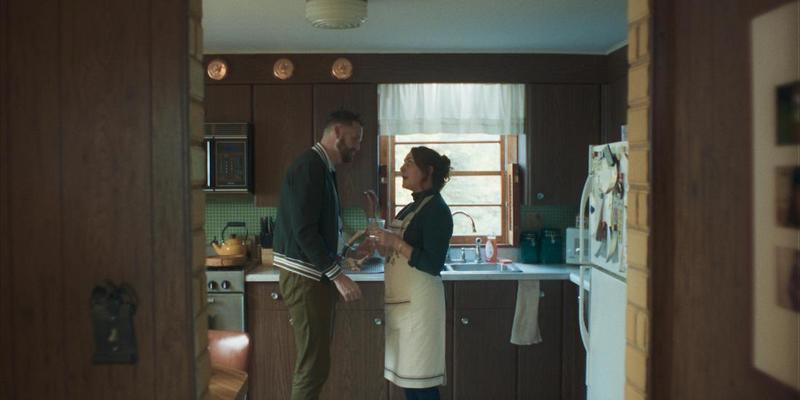
Did it make you wonder why more people don’t do comedy like this?
MAC: Yeah, but if you watch a movie like “Carnal Knowledge,” there’s this amazing scene where they’re playing tennis in the background, and it’s just the two of them sitting on a bench talking. And it’s just like, you don’t see Art Garfunkel and the woman break up, you just know it’s going to happen. That’s the plot point, that’s the reveal. And so I think there’s definitely a tradition of cinema where this was the norm, and it was like, “No, we’re going to be a bit more bold with our choices here, because audiences can handle it.” I think maybe the pressures of box office, or the pressures of just attention span have led to these very choppy, cut-ty, joke-joke-joke-joke films. But what we found is, the more jokes you pack into something, the more you just get overwhelmed by that. You almost need a breath, you need to lull people into, “Wait, I’m not laughing.” And then you hit them with something that they don’t expect.
KM: That also hearkens back to the older comedies where they would set up a joke, pay it off 15 minutes later after you forgot about it. Chaplin was the king of that. He’d like, set a bench down at the beginning of a scene, and at the end of the scene after everything has fallen apart, he trips over the bench. And to me, that’s the absolute genius of comedy—that level of craft. And not to compare us to that in that way …
MAC: Too late.
KM: Yeah, I did it, sorry. [laughs] That kind of humor really is at your core entertaining, it’s not just laughing at joke-joke-joke-joke.
Moving forward do you think you guys will try to continue that kind of approach to comedic storytelling? Or do you think you’ll try to work with more cuts, and more set-ups?
MAC: I definitely don’t think my next film will be long single takes. It’ll have a couple, but I think that was specific to this story. But I think we learned a lot from shooting a particular film this way, and the fact that there’s something about really letting characters get into a rhythm and find things and explore and open it up, I would much prefer to make a film where I had all the tools of cinema at my disposal, and editing. I can cut away to things.
KM: Use different takes!
MAC: I can use great takes that I don’t have to leave on the cutting room floor. But there’s something about finding simplicity in your approach to things, and certainly always understanding that you need to have a plan for how the camera lenses the story and tells the story, and how you choreograph this whole story in front of the camera, even if it’s very limited. That is one of the biggest contributing factors to how people experience comedy, and so for us, we are very interested in pushing the boundaries of that, and finding new ways to present comedy visually.
“The Climb” is now available on digital, Blu-ray, and DVD courtesy of Sony Pictures Home Entertainment

